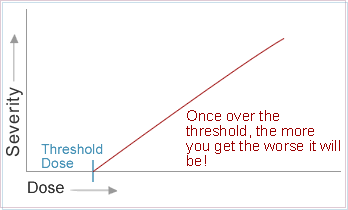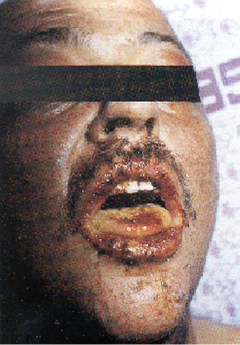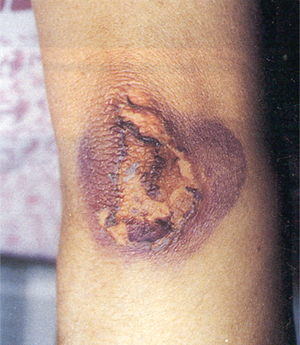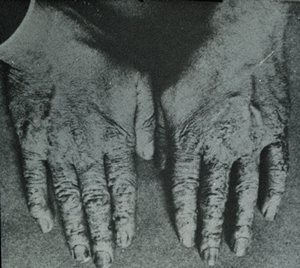Radiobiology and the Classification of Biological Effects
Deterministic Effects
- Deterministic Effects 1
- Deterministic Effects 2
- Deterministic Effects 3
- Deterministic Effects 4
Effects at Tissue Level
For deterministic effects we witness a threshold dose and severity depends on dose received.
The cells in most tissues and organs of the body are continuously being replaced. However, the balance between loss and replacement rates may be affected by many factors including exposure to radiation. The result of a net loss of cells may be the failure of function of the tissue or organ. Gross reductions in the number of healthy cells in vital tissues may lead to death.
For each tissue type there is an absorbed dose threshold level below which the probability of harm is very low. Above this threshold, pathological conditions will be observed in nearly all the irradiated population and their severity will be dose-dependent.

Deterministic effects
Examples of these non-stochastic effects range from:
- eye cataracts,
- sterility,
- skin-reddening (erythema),
- and effects on a foetus,
All of which occur at moderate exposures, compared to the symptoms of Acute Radiation Syndrome such as nausea, vomiting, bone marrow syndrome and central nervous system syndrome at exposures near lethal levels.
Because of the onset of clinically observable effects of a deterministic nature, the International Commission on Radiological Protection now calls them "deterministic effects".
If damage caused by radiation occurs in germ cells, this damage may be transmitted and become evident as hereditary disorders (mutations and chromosomal aberrations) in the descendants of the individual exposed. One such effect is the production of dominant mutations leading to genetic disease in the first generation progeny, which may be as severe as to be life-threatening.
Although it is assumed that hereditary effects will be mostly restricted to the first and second generations of progeny, it is also assumed that any non-lethal damage to germ cells may be further transmitted to subsequent generations.
The images on this page show examples of acute radiation damage (from a Radiologist using his hands for quality assurance purposes with his ray machine).
Further examples of radiation damage are given below:


Image AImage A


Image B
Image B


Image C
Image C


Image D
Image D


Image E
Image E
- Image A: Radiological accident in San Salvador showing burns to hand and feet of a male worker who was exposed to a Co-60 source in a irradiation and sterilisation facility.
- Image B: Radiological accident in Tammiku showing the hand of a male worker who handled a Cs-137 Radiotherapy source. Estimated dose to hand was 1 Gy.
- Image C: Radiological accident in an irradiation facility at Soreq in Israel. Injury to the skin and face of a male worker who was exposed to a Co-60 source when trying to free a blocked conveyor belt.
- Image D: Radiological Accident Soreq, Israel, 1990 Dose 10-20 Gy, patient died 36 days later.
- Image E: Electron Accelerator Accident in Hanoi, Vietnam. Male worker's hand exposure. Left and Centre at 26 days. Right at 113 days.

